Best external SSD for gaming on PC and next-gen consoles

Snag one of the best USB Type-C SSDs for game storage on PC or console
Hooking up one of the best external SSDs for your PC or console is one of the easiest and most cost effective ways to expand your storage while maintaining decent game and level load times.
Black Friday deals

Black Friday 2020 deals: the place to go for the all the best Black Friday bargains.
The best USB Type-C drives deliver performance well beyond internal PC SSDs from just a few generations ago. Some external SSDs now crank out as much as 2GB/s of raw bandwidth. Admittedly, that’s a long way off the latest PCIe 4.0 M.2 drives for PCs let alone the crazy-quick integrated storage in the new Microsoft Xbox Series X and Sony PlayStation 5. But it’s enough for reasonably nippy game loads.
What’s more, the Xbox Series X/S-specific expansion SSD is not only expensive, it’s also proprietary, so can’t be used with other devices. By contrast, USB Type-C is the new universal standard. As for Sony’s Playstation 5, its M.2 SSD expansion slot has yet to be enabled, so USB-C is the way to go.
It’s also your best bet for simple high-performance external storage for PC with the broadest possible compatibility. A wide range of form factors and capacities are available, along with two classes of performance. Predictably, you get what you pay for, with the higher performing drives commanding more money. But each one of these drives is small enough to be easily pocketable and all take their power from the USB interface. So they’re ultra portable and easy to use.
Best USB Type-C SSDs for game storage
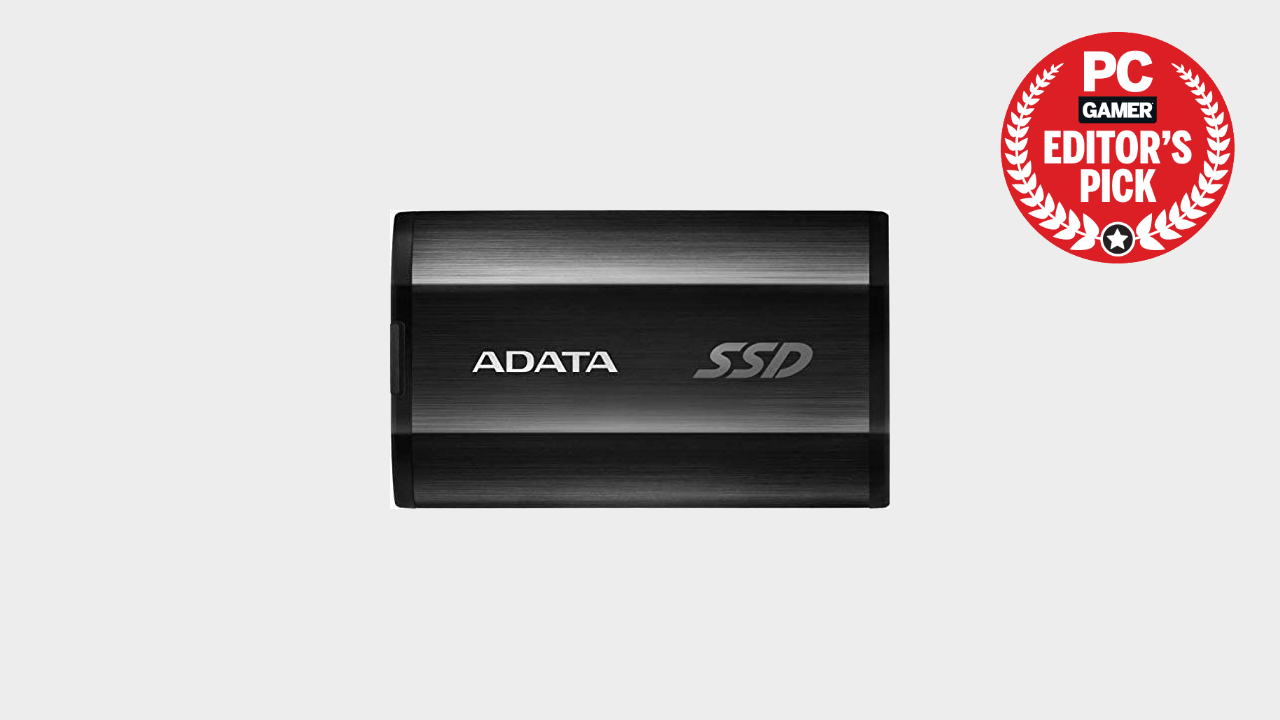
1. ADATA SE800 1TB
Fast. Bomb proof. Affordable
Storage: 1TB | Connectivity: USB 3.2 Type-C | Sequential read: 1 GB/s | Dimensions: 73 x 44 x 12 mm | Warranty: 3 years
NVMe inside? Yep. TLC NAND memory? Affirmative. IP rating for increased robustness including water proofing? Check. All for an attractive price? Confirmed. The ADATA SE800 Ultra FAST 1TB really does have quite a bit going for it.
It starts with that M.2 NVMe drive, bridged to a USB interface. In this case, it’s a 10Gbps USB 3.2 Gen 2 interface rather than a 20Gbps USB 3.2 Gen 2x2 connection. But this drive is still claimed to be good for 1GB/s data transfers in both directions. Lest you have forgotten, that’s around twice as fast as any SATA-based drives, including internal SSDs connected natively via SATA.
It’s also nice to see that ADATA has equipped the SE800 with TLC rather than QLC NAND memory. The latter is typically slower and offers lower write endurance. All very nice, but what is really unusual is the SE800’s IP68 rating, a characteristic hinted at by the pop-off cover over the USB Type-C port. It means the drive is rated as impervious to dust ingress and can survive immersion in up to 1.5 metres of water for 30 minutes.
That makes it unique among these SSDs and, what’s more, given the competitive pricing you’re getting that IP rating effectively for free. Performance wise, in testing the ADATA delivers in the headline 1GB/s spec for sequential transfers while notching up 4K random throughput that’s comparable to the competition at 21MB/s for reads and 40MB/s for writes. The only slight chink in the SE800’s armour is that sustained performance drops down to around 260MB/s after around 15GB of internal drive traffic. That’s a little off the pace of some alternatives. But it’s not enough to spoil an otherwise highly appealing package.
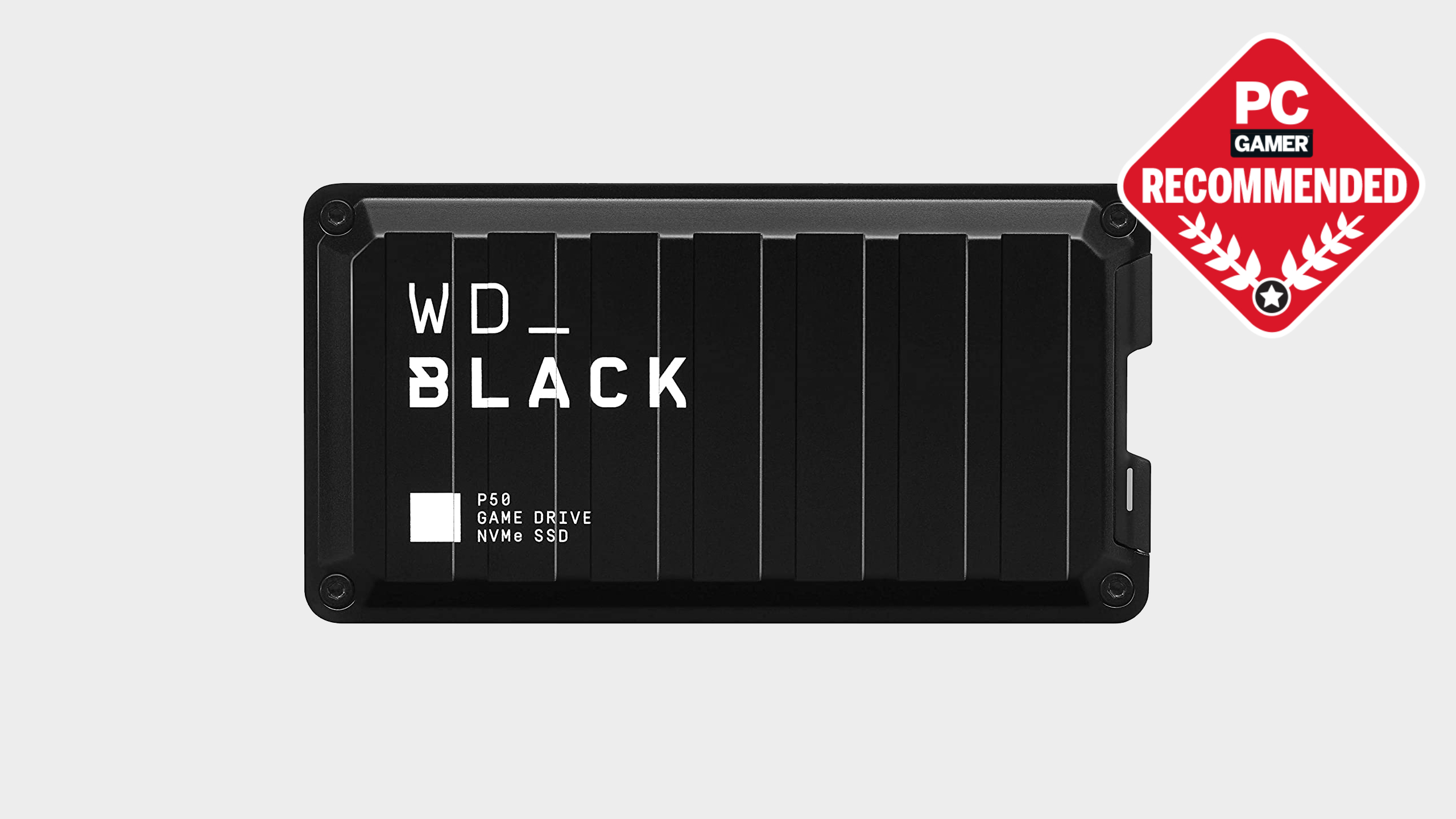
2. WD Black P50 Game Drive 1TB
The fastest USB Type-C gaming drive in town
Storage: 1TB | Connectivity: USB 3.2 2x2 Type-C | Sequential read: 2 GB/s | Dimensions: 118 x 62 x 14 mm | Warranty: 5 years
If you’re looking for fast USB-powered external storage for games, this is currently as good as it gets. At least, it is in theory. The WD Black P50 Game Drive, tested here in 1TB format but also available in 500GB and 2TB flavours, is a rare breed of USB Type-C external SSD. That’s because it supports the very fastest USB 3.2 Gen 2x2 20Gbps interface. Which is why it’s capable of read and write speeds up to 2,000MB/s.
Of course, to achieve those speeds, you’ll need a PC or console that supports USB 3.2 Gen 2x2. The former remains rare, the latter is entirely non-existent. Still, the fact that the P50 Game Drive is essentially an NVMe M.2 in a ruggedised enclosure bodes well. What’s more, WD has gone for TLC rather than slower QLC memory. TLC NAND memory also has better endurance characteristics than QLC, which no doubt contributes to the excellent five-year warranty coverage. Our only reservation, out of the box, is that the rugged looks don’t come with a formal IP rating for ingress protection, which is a pity.
As for real-world performance, in terms of peak sequentials, the WD Black P50 easily maxed out the 10Gbps connection of our test PC, registering just over 1GB/s in both directions. It’s likely capable of the advertised 2GB/s with the right interface. Sustained performance is a little less impressive, with performance dropping to around 375MB/s after around 30GB of data transfer. Random access performance is likewise reasonable rather than spectacular with 22MB/s reads and 40MB/s writes for the 4K QD1 metric.
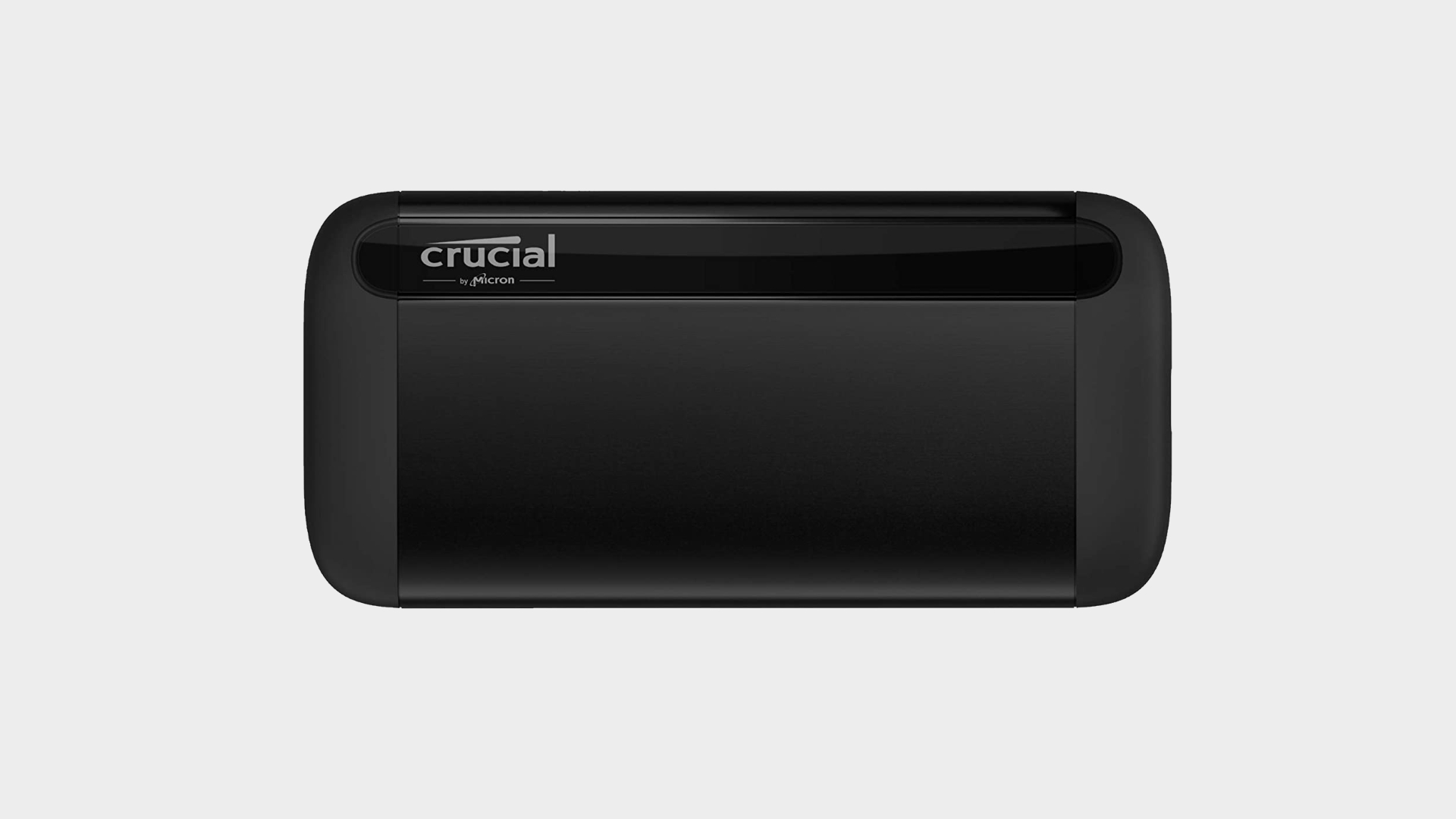
3. Crucial X8 2TB
A great-value NVMe-based external SSD
Storage: 2TB | Connectivity: USB 3.2 Type-C | Sequential read: 1,050 MB/s | Dimensions: 110 x 53 x 12 mm | Warranty: 3 years
If you want it all, you’re going to have to pay for it. So, sometimes it makes sense to compromise. Enter the Crucial X8 2TB USB Type-C SSD. It’s not the absolute fastest external SSD on Earth. But it is quick. It’s extremely capacious. It’s built into a really solid-feeling metal case. And it’s attractively priced. In fact, right now it’s available on Amazon.com as we type for $249. That’s over $150 less than WD’s Black P50 Game Drive in 2TB trim.
For the most part these are pretty similar drives. Like the WD SSD, the Crucial X8 is essentially an M.2 NVMe drive behind a USB bridge, in this case a Crucial P1 with a hefty 2GB of DRAM. One difference is that where WD has used TLC NAND memory, Crucial has gone for cheaper, slower and less durable QLC NAND. Another really critical contrast, of course, is USB 3.2 Gen 2 versus USB 3.2 Gen 2x2.
If that seems like an esoteric distinction, it means the WD supports 20Gbps data transfer, over twice the speed of this 10Gbps Crucial drive. Still, Crucial claims around 1GB/s for sequential reads and writes. So, the X8 is theoretically twice as fast as SATA-based drives.
And so it proves in our testing, with the Crucial X8 good for just under 1GB/s for sequential transfers in both directions. 4K random performance is decent, too, for this class of drive, with reads of 27MB/s and writes just over 40MB/s at QD1. Given the use of QLC NAND, one big question mark is sustained performance. However, while the Crucial X8 does drop down to 380MB/s with sustained traffic, in our testing it maintained that level for many 10s GB. Which puts it on a par with the more expensive WD drive.
Best gaming laptops | Best gaming keyboards | Best gaming mouse
Best gaming motherboards | Best graphics cards | Best gaming monitors
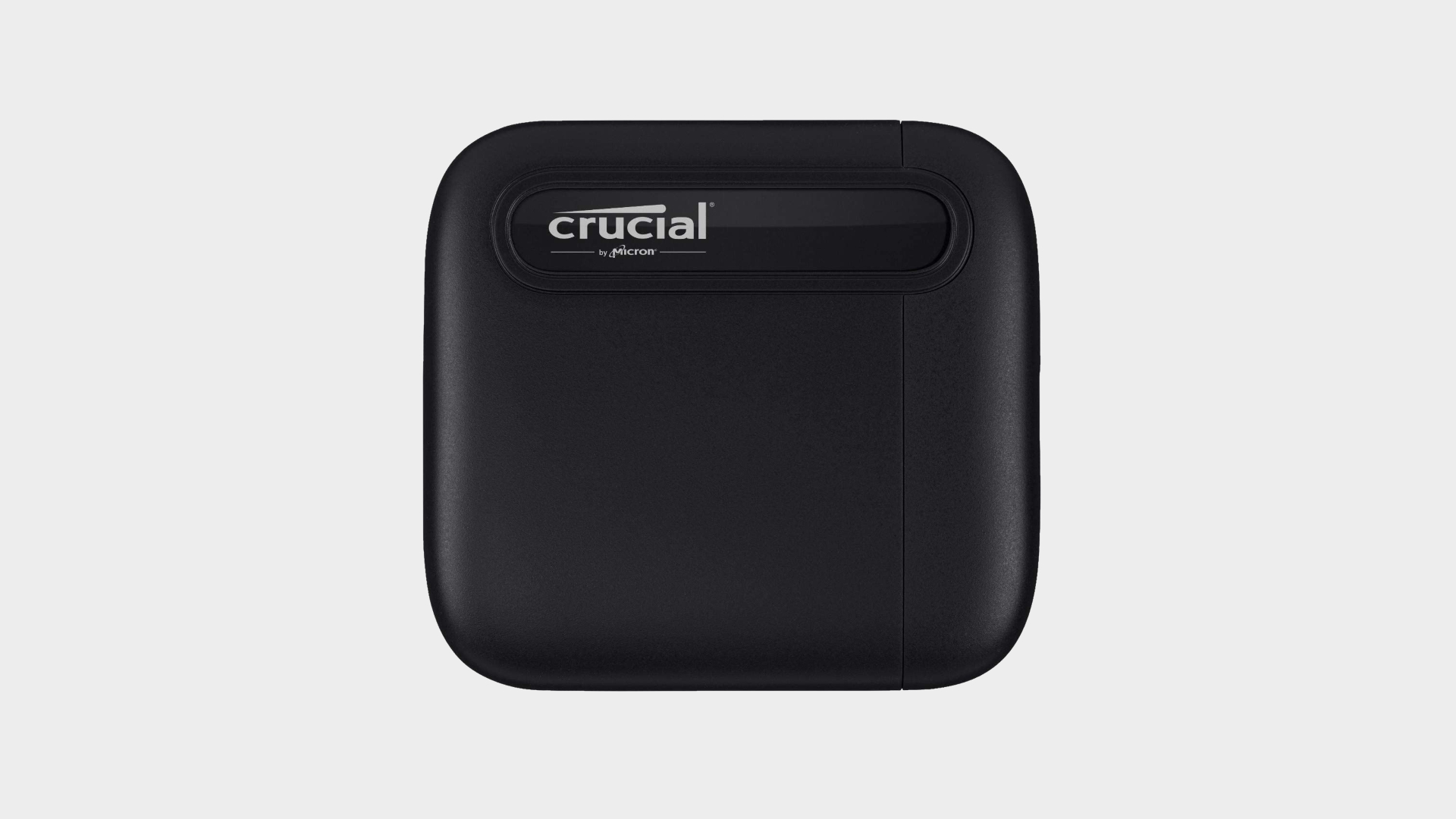
4. Crucial X6 2TB
The toughest external hard drive on the market
Storage: 2TB | Connectivity: USB 3.2 Type-C | Sequential read: 540 MB/s | Dimensions: 69 x 64 x 11 mm | Warranty: 3 years
There’s a fine line between compelling and compromised when it comes to external USB Type-C SSDs. For our money, the Crucial X6 falls on just the wrong side of that divide.
Even at normal prices, it’s only around $40 cheaper than its X8 sibling of the same 2TB capacity. As we write these words, the X8 2TB actually on offer for $10 less, though that is a temporary deal. Anyway, the extra money doesn’t feel like all that much to pay for literally double the sequential performance with the X8. The Crucial X6, you will therefore have guessed, is based on a bridged SATA interface where the X8 rocks NVMe.
One of the knock-on implications of that architectural difference is that the X8 has fully 2GB of DRAM cache where the X6 has none at all. The X6 also lacks a USB-C to USB-A cable, which seems particularly miserly. It’s the only drive here that doesn’t come with both a C-to-C and a C-to-A cable. That said, the X6 does support features like TRIM passthrough, which isn’t always the case on cheaper USB drives and ensures that performance should be sustained in the longer term. It’s also very compact for a 2TB drive, measuring just 6.9cm by 6.4cm by 1.1cm.
As for raw performance, peak write speeds are a little disappointing at 378MB/s, as is the 12MB/s 4K QD1 write throughput. It’s also worth noting that write performance eventually drops to 180MB/s with sustained throughput. However, in our testing it never dropped lower than that, even with over 50GB of sustained traffic.

5. Vava Portable SSD Touch 500GB
Great security, but suboptimal for gaming
Storage: 2TB | Connectivity: USB 3.2 Type-C | Sequential read: 540 MB/s | Dimensions: 100 x 30 x 9 mm | Warranty: 3 years
As a pure gaming drive, the Vava Portable SSD Touch is a little overqualified. The product of an Indiegogo crowd-funding exercise, it’s main claim to fame is to cram AES 256-bit encryption with fingerprint activation into a very small footprint. That makes high levels of security very convenient. But it also adds to the cost of the drive.
It’s unlikely most gamers will demand that level of security for their libraries. So, putting that added investment towards more storage space and raw performance as opposed to advanced data protection will probably make sense for most. That said, if you’re looking for multi-purpose USB storage, the Vava has plenty going for it. That includes compact proportions at 10cm long, 3cm wide and 9mm thick. It also feels robust thanks to an aluminium and zinc alloy frame.
What it’s not, is particularly speedy. That’s largely down to the drives underlying SATA interface, which pegs claimed peak performance to 540MB/s for reads and 480MB/s for writes. In practice, is Vava actually slightly outperforms those claimed sequential speeds. It also matches several NVMe-based drives when it comes to 4K random access performance, registering 23MB/s for reads and 40MB/s for writes. That said, the drive’s internal performance drops to 220MB/s when presented with multiple GB of sustained data transfer. All of which makes it a decent option as an all-rounder, but suboptimal as a pure games drive.

6. Seagate Barracuda Fast SSD 1TB
A slightly underwhelming SATA-based SSD
Storage: 2TB | Connectivity: USB 3.2 Type-C | Sequential read: 540 MB/s | Dimensions: 93 x 79 x 9 mm | Warranty: 3 years
This is not the fastest USB Type-C SSD you can buy for gaming. But then, it’s far from the most expensive. Compared, say, to the WD Black P50 Game Drive, the branding of the Seagate Barracuda Fast SSD 1TB looks like a bit of stretch. Rated at 540MB/s for reads and 500MB/s for writes, it’s simply nowhere near as quick.
Then again, that fancy WD Drive with its NVMe SSD and USB 3.2 Gen 2x2 20Gbps interface costs roughly 75 per cent more for the same 1TB of capacity. Moreover, a great deal of that increased performance isn’t available on most PCs and all consoles due to limited interface support.
A great deal, that is. But not all. The Seagate Barracuda Fast SSD 1TB is essentially a SATA SSD behind a USB bridge, which means performance is limited to 6Gbps despite the drive’s 10Gbps USB 3.2 Gen 2 interface. What’s more, in our testing, the Seagate Barracuda Fast SSD 1TB couldn’t even deliver its modest claimed performance, clocking just 306MB/s for sequential write performance. It also drops down to just 190MB/s with sustained multi-GB workloads.
Arguably even more problematical is the existence of NVMe-based drives for similar money. The ADATA SE800 Ultra FAST 1TB, for instance, is around twice as quick for peak sequential performance. It’s pity because the Seagate Barracuda Fast SSD looks slick with its sleek enclosure and LED status light. And Seagate’s file syncing and backup software is handy. But there’s simply better performance to be had elsewhere.
The best external SSDs: what to look out for
Inside story
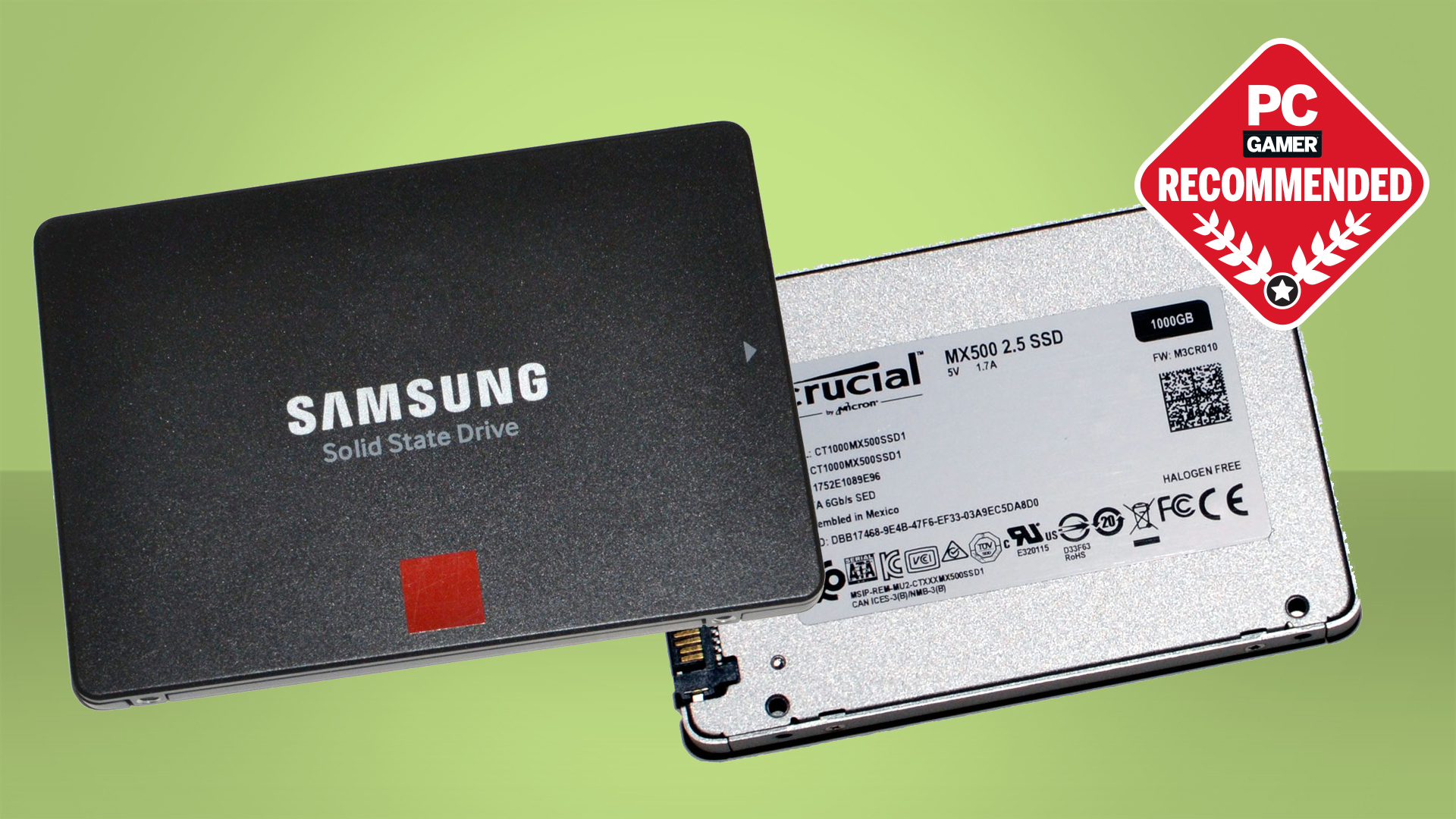
These are the best SSDs for gaming, if you want an internal drive upgrade. Even if you're looking at external storage, the decision of HDD vs SSD is still a factor, with fast USB 3.2 10Gbps SSD drives now available.
Performance wise, your choice is between a drive based on the SATA interface with a bridge to USB, or an NVMe interface, again behind a USB bridge. SATA-based USB Type-C drives top out at around 540MB/s peak performance, while the NVMe options up the ante to a maximum of 2GB/s.
At least they do in theory. To achieve those peak speeds, you’d need a USB 3.2 Gen 2x2 port with 20Gbps capability. That’s something that remains relatively rare on PCs and laptops and isn’t available on any console, including the new Sony Playstation 5 and Microsoft Xbox Series X. Instead, you’ll find most high speed USB ports top out at 10Gbps.
Indeed, it’s unlikely that USB 3.2 Gen 2x2 will ever become widely used. Instead, USB 4 will likely take over, increasing bandwidth to 40Gbps. But the good news is that USB 4 is backwards compatible with USB 3.2 Gen 2x2. So, it will be possible to extract maximum performance from a USB 3.2 Gen 2x2 20Gbps drive in future using a USB 4 interface.
Of course, interface specification isn’t the only deciding factor when it comes to performance. Features like controller specification and the type and quality of NAND flash used are also important, though it’s not always easy to identify the finer details. Many manufacturers are reluctant to quote full specifications. Drives with four-level QLC NAND memory, for instance, will tend to have worse underlying performance than those with triple-layer TLC memory.
Form factor and other frills should also be part of your calculations. Some drives are built to be particularly robust, others include extras like hardware encryption, status LEDs or even fingerprint scanners for added security. Some of those features fairly tangential to the basic remit of providing high-performance storage space for a games library. But you might also be looking for a drive that can serve more than one role. With all that in mind, here are the best USB Type-C SSDs for game storage in 2020.
